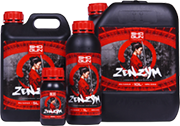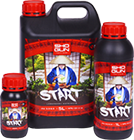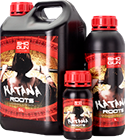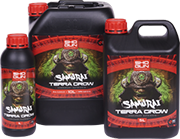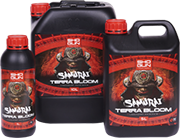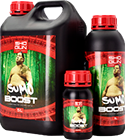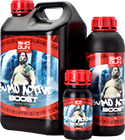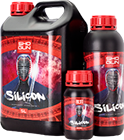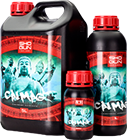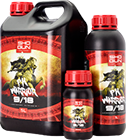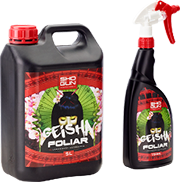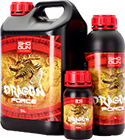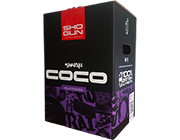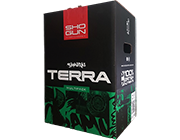Hard vs. Soft, R.O. vs. Tap – How Your Choice of Water Affects Your Crop
Hard vs. Soft, R.O. vs. Tap – How Your Choice of Water Affects Your Crop
You’ve bought yourself a fancy hydroponics system, lamps, reflectors, extractor fans, and done your nutrient research. But of the many different factors a grower must consider, one that’s often surprisingly overlooked is the type of water you use. “Surprising” because water forms one part of the trinity of “sun, soil and water” that every plant needs to thrive. In this blog we take a look at the main options available to growers; tap water versus filtered water, and “hard” versus “soft” water. So before you fill your watering can or your nutrient tank, consider the question – do you know what’s in your water, and how it will affect your plants?
Soft v Hard
Everyone has heard the expressions hard and soft water, certainly for anyone who’s had to descale a kettle. Quite simply, hard water contains more minerals than soft water – notably calcium, magnesium, lime, and sometimes even ferrous iron amongst others. These minerals can build up and cause limescale to develop over time, clogging up your hydroponics system. It tends to have higher levels of alkalinity, which requires the addition of acidity to reduce a potentially harmful high pH value in your nutrient tank, especially if you’re growing acid loving plants or vegetables. These associated high alkaline values can prevent the uptake of nutrients and negatively affect your crop – and no-one wants that.
So… Should I avoid hard water?
You may now be drawing this conclusion, especially if you’re currently picking pieces of limescale out of your teeth after a cup of tea, but it can actually have some positive health effects, for both humans and plants. After all, along with sulphur, calcium and magnesium are crucial nutrients, not far behind nitrogen, phosphorus, and potassium.
Soft water, by contrast, has a low mineral content. And you might be forgiven for assuming this is the preferred water type amongst growers looking to gain total control of their nutrient set up, but you’d be wrong. Kind of. You see for one thing soft water, especially from the tap, is often “softened” (i.e. treated to have its mineral content removed) using sodium chloride, which can cause an unhelpful build-up of dissolved salts, with chloride ions accumulating in your plants’ leaves to dangerous levels. It may be a slow build-up of salts, but it’s a build-up nevertheless, and can lead to classic leaf “scorch”. The only way around this is a good old-fashioned leaching – flushing away the sodium, and probably some key nutrients, so always ensure you replace the lost nutrient content afterwards.
Choices, choices…
So while hard water may not be good for your kettle, it’s surprisingly useful for your plants. We’d always recommend using a hard water specialist formula such as the SHOGUN Samurai Hydro range or SHOGUN Samurai Terra range, both of which have soft and hard versions for both the growth and bloom phases of your plant’s growth cycle. In the case of hard water nutrient solutions, there’s deliberately less calcium and magnesium to make up for the excess in your hard water source, whereas soft water versions contain more calcium and magnesium. If you’re still short on calcium and magnesium levels – essential for nutrient uptake – you can give your plants a boost with a product such as SHOGUN CalMag.
Control
If you want total control and rigid nutrient management, or maybe the hard water source in your area is excessively hard (maybe containing high levels of sodium or boron), or perhaps you’re just worried about the effect of limescale on your system; there are other options. Rainwater of course is soft, but untreated, so is naturally safe for plants. Well, it would have to be, wouldn’t it? But it’s not always readily available when you’re growing plants indoors. Which brings us round to to Reverse Osmosis (R.O.) water.
Reverse Osmosis (R.O.) Water
Reverse Osmosis – the good
R.O. water is created using a filtration system consisting of a partially-permeable membrane, and it’s an extremely effective means to reduce hardness and remove contaminants in your water source, leaving you with pure, unadulterated water. It also eliminates every mineral ion from your water source, giving the grower a blank canvas to work with, which has both positive and negative implications. Your plants will only draw their minerals from your nutrient solution, giving you that aforementioned control, which makes it a very popular option amongst serious hydroponics growers, but there are further issues you should be aware of.
Reverse Osmosis – the bad
Unfortunately, as with most things in life, there’s a downside. Crucial bicarbonates in your water are also filtered out, meaning there is no natural buffer to pH changes. There are moments within the growth cycle of your plants when pH can spike or plummet. In the case of the former, this can happen during rapid vegetative growth, and in the case of the latter, when your plants are flowering. Wild swings in pH values are always problematic for plants, and can result in nutrient deficiencies, weaker natural resistance to environmental stress, and stunted growth. But that’s not where the caveats end. R.O. uses a lot of energy and a large amount of water, so cost is a factor.
So what next?
Importantly, you want a clean water source. So if you don’t fancy investing in a reverse osmosis filter, you can still happily rely on regular hard water from your tap. These days it’s relatively inexpensive to get a “greenhouse” water analysis to check for purity and hardness of your water source, and from then on it’s a case of monitoring the nutritional content of your nutrient solution, buying the right product, and administering the right doses at the correct moment in the growth cycle. For example, if you have a 40 L nutrient tank and use a standard feeding schedule, SHOGUN recommends 80 mL of Samurai Coco in the first fortnight of vegetative growth using RO water, but just 32 mL if using hard water. Similarly, on this same basis, for the three weeks of flowering growth, you’d use 120 mL for R.O. water and 72 mL for hard water. We’d always recommend using SHOGUN’s online feed calculator to get your sums right. Oh, and keep your eyes peeled for signs of high alkalinity in hard water if you want to avoid problems with your plant growth!
Finally, although this may seem a lot to take in, it can be fun to experiment. Why not try creating a mix of both reverse osmosis water AND tap water, which extends the life of your filter while improving your water quality? Just go out there, mix and match, and enjoy the learning process. Happy growing!
